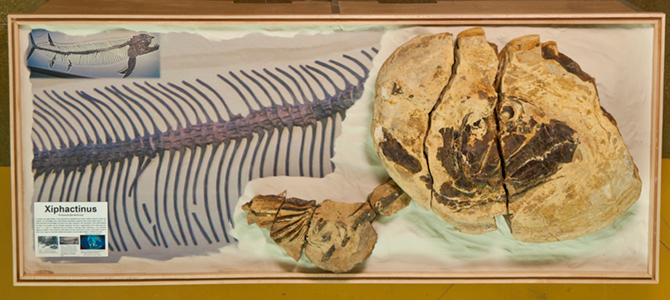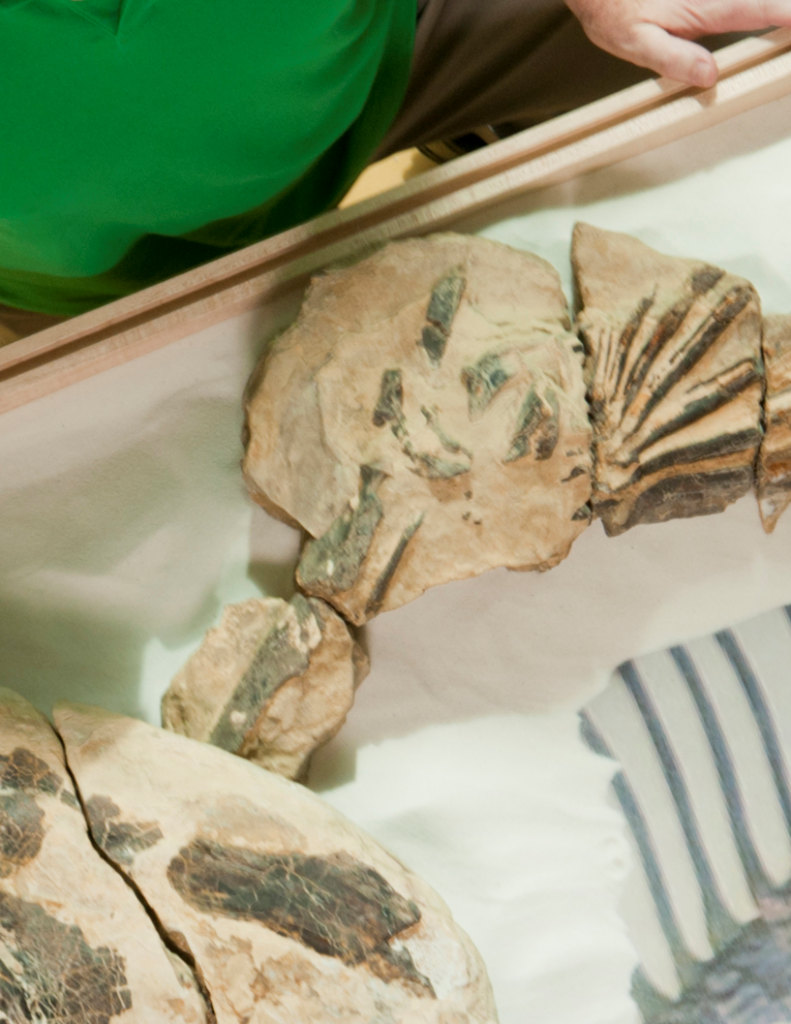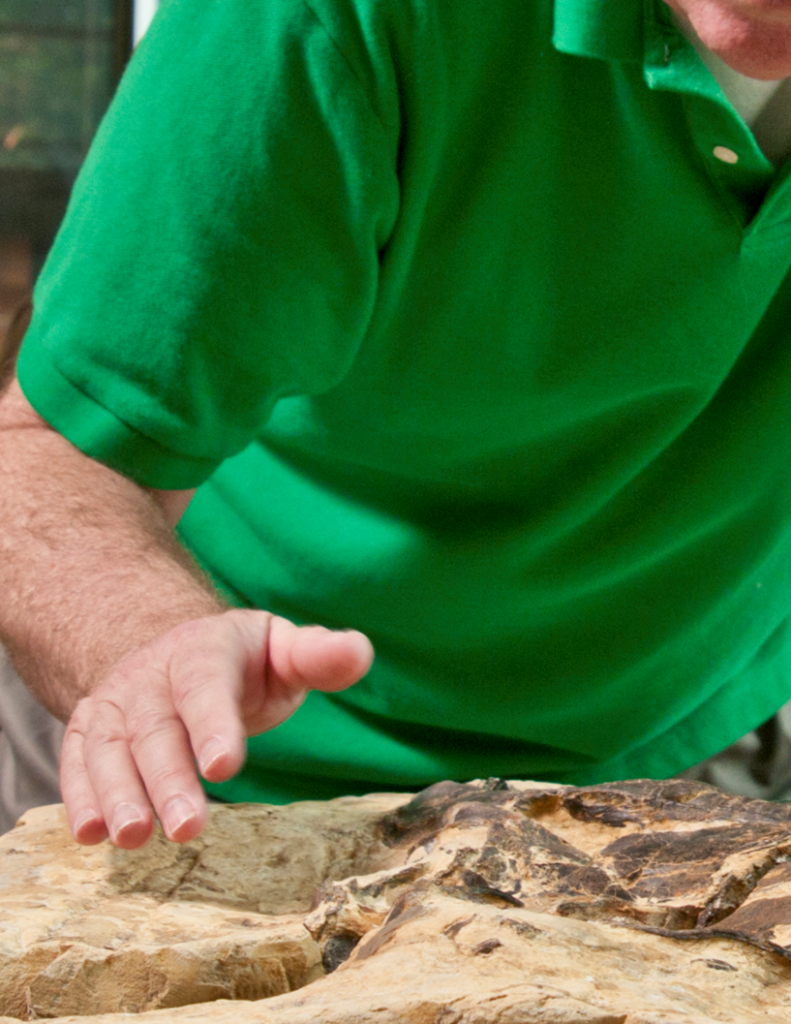UNT to display fossil of giant prehistoric fish found by Denton County resident
DENTON (UNT), Texas -- Its face had an expression like a giant bulldog, with fang-like teeth and an upturned jaw that could open wide to consume large prey. Its flippers had the appearance of wings. With more than 100 vertebrae along the backbone, it resembled an Atlantic tarpon -- except that it was 14 to 15 feet long instead of 5 to 8 feet long.
Visitors to the University of North Texas' Environmental Education, Science and Technology Building will be able to see a 250-pound fossil of the head of the prehistoric Xiphactinus Audex fish, a menacing predator that lived between 100 and 65 million years ago, as well as a fossil of the creature's right flipper. The fossils were discovered in 2010 by Denton County resident Paul Jones and his daughter Maggie while exploring the creek on his property behind their home. The Xiphactinus will be displayed on the first floor of the EESAT Building beginning April 21, 2012. The building is located on the northwest corner of Avenue C and West Mulberry Street at 1704 W. Mulberry St.
The fossils were identified by Dr. George Maxey, UNT lecturer in Geography and Director of the University's Meteorite, Rock, Mineral and Fossil Identification Lab. He dates the specimens as being 90 to 100 million years old, from the Late Cretaceous period, and says they're among the most exceptional finds that have been brought to the lab since it opened in 2010 to help community members identify found objects.
"We were stunned to see them," Maxey said. He described the Xiphactinus Audex as a "fast-swimming, aggressive predator" that lived in coastal waters that once covered parts of what is today Denton County. "These fossils show us what Denton County was like 100 million years ago, when it was a coastal environment," he said.
The fossils are in an 8-foot-long glass display case. A printed artist's representation of the rest of the Xiphactius Audex's body is in the case between the head and flipper fossils, to give viewers an idea of the proportion of the fish's body. The case will also have additional information about Texas during the Cretaceous period.




